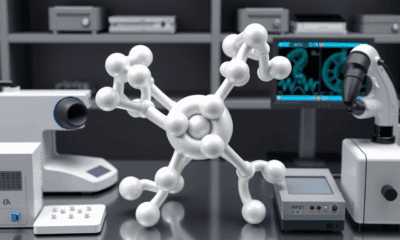While we try to keep things accurate, this content is part of an ongoing experiment and may not always be reliable.
Please double-check important details — we’re not responsible for how the information is used.
Construction
Scientists Harness Quantum Motion using Ultrafast Laser Trick
Harvard and PSI scientists have managed to freeze normally fleeting quantum states in time, creating a pathway to control them using pure electronic tricks and laser precision.

Construction
Smarter and Cheaper Quantum Dots: A Breakthrough for Photonic Quantum Computing
Researchers have found a clever way to make quantum dots, tiny light-emitting crystals, produce streams of perfectly controlled photons without relying on expensive, complex electronics. By using a precise sequence of laser pulses, the team can “tell” the quantum dots exactly how to emit light, making the process faster, cheaper, and more efficient. This advance could open the door to more practical quantum technologies, from ultra-secure communications to experiments that probe the limits of physics.
Chemistry
Breaking Down Barriers: Scientists Uncover the Secrets of Quantum Tunneling
For the first time ever, scientists have watched electrons perform a bizarre quantum feat: tunneling through atomic barriers by not just slipping through, but doubling back and slamming into the nucleus mid-tunnel. This surprising finding, led by POSTECH and Max Planck physicists, redefines our understanding of quantum tunneling—a process that powers everything from the sun to your smartphone.
Bacteria
A New Hope Against Multidrug Resistance: Synthetic Compound Shows Promise
Researchers have synthesized a new compound called infuzide that shows activity against resistant strains of pathogens.
-

 Detectors7 months ago
Detectors7 months agoA New Horizon for Vision: How Gold Nanoparticles May Restore People’s Sight
-

 Earth & Climate8 months ago
Earth & Climate8 months agoRetiring Abroad Can Be Lonely Business
-

 Cancer8 months ago
Cancer8 months agoRevolutionizing Quantum Communication: Direct Connections Between Multiple Processors
-

 Albert Einstein8 months ago
Albert Einstein8 months agoHarnessing Water Waves: A Breakthrough in Controlling Floating Objects
-

 Earth & Climate7 months ago
Earth & Climate7 months agoHousehold Electricity Three Times More Expensive Than Upcoming ‘Eco-Friendly’ Aviation E-Fuels, Study Reveals
-

 Diseases and Conditions8 months ago
Diseases and Conditions8 months agoReducing Falls Among Elderly Women with Polypharmacy through Exercise Intervention
-

 Chemistry7 months ago
Chemistry7 months ago“Unveiling Hidden Patterns: A New Twist on Interference Phenomena”
-

 Agriculture and Food8 months ago
Agriculture and Food8 months ago“A Sustainable Solution: Researchers Create Hybrid Cheese with 25% Pea Protein”





























